
My family and I may never fully recover from what was done to us by The Calgary Herald, but becoming an online business owner has given us a way forward and hope again for the
future.Anton Hout from australian-shepherd-lovers.com
After 22 years of dedicated service to his employer, Anton Hout was fired. Overnight, he went from earning a good income to nothing. He lost everything, including their family’s home.
On top of the financial stress, Anton suffered from post traumatic stress disorder, caused by years of severe bullying at his workplace.
To heal his wounds, he started a website about workplace bullying. This first foray into the online world was meant as a form of self-therapy, but it led to much more. It opened his eyes to the possibilities of earning an income online.
The more he researched, the more he liked the idea of starting an online business. When he finally found Solo Build It!, the path to a brighter future unfolded, a future where he would be in control of his destiny.
But let’s hear Anton’s story from the beginning…
1. Anton, you started your online business after a 22-year career that had begun as a dream job but ended in a nightmare. Can you tell us more about that?
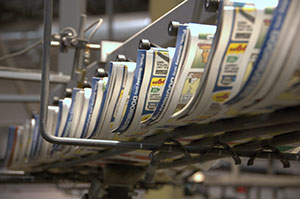 When I was at The Calgary Herald newspaper I worked my way up to become a Journeyman Printer in the Composing Room, which later became the advertising production department.
When I was at The Calgary Herald newspaper I worked my way up to become a Journeyman Printer in the Composing Room, which later became the advertising production department.
Unfortunately, I had to join a union that was continually resistant to technological change. Since I loved the innovations, especially after Apple revolutionized the printing industry with the Macintosh, this put me at odds with senior union members and the union executives.
I then helped the company to start a commercial printing division, which engendered more jealousy, animosity, and resentment. Harassment, bad-mouthing, and sabotage of my work began in earnest.
As if that weren’t enough, I then developed software for the company that dramatically improved the efficiency of the ad proofing process. The software was purchased by the company and was eventually rolled out across three departments.
If the union goons were hostile before, this drove them foaming-at-the-mouth rabid. At this point, I even received a threatening message at my home.
All of this abuse had gone on for years. Management did nothing and eventually even joined in. This level of stress for so long had affected my health and I was forced to take time off work.
While on short-term disability, attempting to recover from the effects of the abuse, the company terminated me, with the full support of the union, of course.
After 22 years of dedicated service, going well above and beyond the bare requirements of the job, I was fired and given no severance. $0.
I went from earning a very decent living to nothing overnight. We lost everything as a result, including our home. I now had PTSD and was barely functional. I limped along and attempted to find other work. But my work experience was so specialized that it was almost useless.
Shell-shocked and without marketable skills, it is about this time that I created my first website. It was about workplace bullying and was a kind of therapy and a way to try to warn others. But in doing research on other websites, it exposed me to things like Google ads and affiliate programs.
I began to wonder if it was possible to actually earn a living online; to eventually be able to work from home, be my own boss, and never again be put in a position where I would have to endure the kind of abuse that had devastated our lives.
It wasn’t long before I stumbled across Solo Build It! (back then still called Site Build It!). Hmm, this SBI! thing looks interesting, I thought to myself…
It’s scary to think that your dedication and engagement at work could turn against you and eventually lead to losing everything. Luckily Anton’s story has a happy ending. He was determined to find an alternative way to make a living; one where he was in complete control and no one could take away what he had built: his own online business.
His choice of topic might surprise you. It had nothing to do with his decades of experience in newspaper printing… Meet “Levi,” Anton’s faithful Australian Shepherd dog.

2. How did you decide about your niche, Australian Shepherds? How did you know it was the right topic for you and had great business potential?
The niche I decided on was almost decided for me. After coming home from work I would spend my time learning about changes in the printing industry and develop skills on my own Mac that would help me troubleshoot problems at work.
In the last few years at The Calgary Herald, I would come home and work every day on the software I mentioned. I would add new features, or work out bugs. I was determined to prove my worth to the company to counteract the attacks by the bullies.
So, I had no other interests or profitable hobbies that I could develop a website around. And at this time just the thought of anything that reminded me of the publishing industry made me ill.
However, we had an Australian Shepherd, Levi. He was the most wonderful, smartest, amazing dog ever! I saw that other “SBIers” had websites about dogs. It was the only topic I could think of at the time. I marveled at people who had the problem of too many niche ideas and having to narrow down their choices!
I checked the numbers in Brainstorm It! and they seemed okay. But, at the time, I didn’t take the Action Guide nearly as seriously as I should have. As a result, the initial keywords I chose and the resulting site blueprint were sub-par. This resulted in the success of the site taking much longer than it should have.
Fortunately, in spite of my missteps, the niche has proven to be viable. That has, in large part, been due to me going back and fixing the problems I created for myself. My advice to anyone just getting started is to save yourself a huge headache and do it right the first time. Follow the Action Guide!
Which is a good thing, as it guarantees that the topic is a great fit. Passion and knowledge about your chosen topic are crucial for long-term business success.
Of course, your love for the topic shouldn’t be the only deciding factor — unless you create your website purely as a hobby, not as the basis for a profitable business.
The first 5 chapters of the SBI! Action Guide (we call them DAYs) are dedicated to researching, evaluating and comparing your niche ideas. This research includes keyword brainstorming (using Brainstorm It!, the tool mentioned by Anton), audience and competitor research, and an in-depth evaluation of possible monetization options.
Once you’ve gathered all that intelligence — ideally about more than one niche idea — you’ll decide which niche fits you best based on…
- overall profitability
- competitiveness (if you can only work part-time on your online business, you should choose a less competitive niche), and
- your passion and knowledge for the topic.
3. Tell us about your philosophy regarding content. How do you know what your prospective customers are looking for? Where does this information come from?
I have several sources for content ideas. One of the C2 Invitations I’ve added to the site is a Q & A Forum. So if I see a lot of questions on a particular topic it can become a candidate for an article. The same goes for questions that come up on social media.
I also subscribe to newsletters that are related to my niche. Many companies that have products my readers are interested in have newsletters that can be a great source for article ideas.
Another way to find out what your customers want is to research what they are buying. I check on sites like Amazon.com to look for best-selling products in my niche.
This works out well because not only do you get an idea for an article but you also have a specific, relevant product you can let your readers know about. (I only choose products that I have checked out myself or have high star ratings and great reviews.)
One — often overlooked — way to find out what your readers want is to ask them. I use social media to directly ask for feedback or, as I have often done, ask for article ideas in my newsletter.
I’ve even asked readers if they would like to submit their own articles for consideration. I have received several great articles from readers about a specific topic they were passionate about, had in-depth knowledge of, and for which they were able to provide a unique perspective.
In addition, I use a handy notification service provided by Google. You just enter the keywords you want and Google sends you email alerts. This is a great tool for content research or keeping up to date with what’s going on in your niche.
Last, but not least, is Brainstorm It! and the Master Keyword List (MKL). This is the bread-and-butter of keyword and content research and through which I pass any of the ideas I find using the other methods.
-
Ask your readers. Use all the options you have — on social media, in your newsletter and on your website. Anton mentioned C2 (or Content 2.0), which is one of SBI!’s tools. It allows your visitors to contribute content to your site (text and images). A Q&A section is a great example use for Content 2.0.
-
Stay on top of your niche. Subscribe to newsletters from competitors and providers. Create Google Alerts to be notified when new articles about your main keywords are being published.
-
Research what your audience is buying. Amazon is the ideal place to start this research, as you can find basically everything there! Plus, you have the added benefit that you can review and promote relevant products as an Amazon Associate, so that you earn a commission whenever a reader buys via the link on your site.
-
Use Brainstorm It! regularly. SBI!’s keyword brainstorming tool tells you how often a term or phrase is being searched for, and how much competition there is. It also reveals keywords that you might have never thought about.
The Master Keyword List, which is the analysis part of Brainstorm It!, helps you find the most relevant and profitable topics (aka keywords) to write about. Especially in the beginning, this will be your main content idea source, your “bread-and-butter,” as Anton calls it. But it’s a good idea to keep using the tool regularly to discover new topics and to check demand and supply numbers for topics you’ve found through your other sources.
4. You provide lots of information and resources for free. How do you “upgrade” people from being free content seekers to paying customers?
When people find one of my web pages, they often have a particular problem or are looking for a specific solution. That’s why having the highest quality content is so important. If people see that the information on my website is good they will be more likely to consider one of my recommendations favorably.
I use banner graphics to promote affiliate products as well as my own ebook. I test the graphics to see which ones get the best response. The better the quality of my free content, the longer people stay on the page. The more times they return to the site, the better the chances that they will finally be intrigued enough to decide to click on one of those promo banners and find out more.
If a page is about a topic that has relevant products, I will include the affiliate links in the text of the page. For example, on some pages about dog behavior problems I include a description of an excellent dog training program that can help solve the reader’s problem.
This can also be done in conjunction with custom banners or, for example, Amazon image and text links in order to promote very specific products.
Another important way to keep in touch with my readers and remind them of the products I recommend is through the newsletter.
While there may be a fine line between being too aggressive and too timid in your promotional efforts, it is important to remember that the products you recommend have to be top-notch. Never take your readers or customers for granted.
A rule-of-thumb I use is to ask myself, “Is this is a product I would buy (or have bought) myself or would recommend to family and friends?”
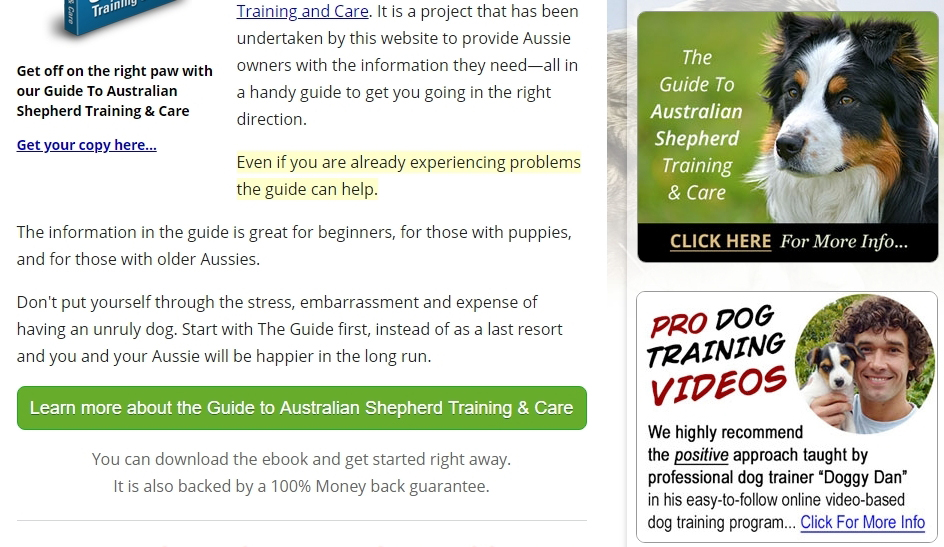
The unique content you create is at the heart of your online business. It attracts the right people, and lots of them through free, organic traffic. Your visitors like what they see, so they start to trust you, to see you as an authority in your niche.
They re-visit your website. They subscribe to your newsletter. They follow you on social media. We call this process PREselling — as it’s the crucial stage before a visitor finally becomes a customer, or acts on one of your other monetization methods (e.g., buys a recommended affiliate product, or clicks on an AdSense ad).
In other words, monetization comes at the end of the Content Traffic PREsell cycle. Too many solopreneurs start with monetization, and fail. Not so Anton. He followed SBI!’s proven C T P M process.
5. How many different income streams do you have? Which ones perform best?
With the Australian Shepherd site, I probably have about a dozen income streams but the vast majority of revenue comes from a core of four.
The problem I found in a dog-related niche was that people will often research online but purchase at a local pet store where they can see and feel the product or easily return it if necessary.
That has changed to a certain extent as a result of Amazon. People trust the buying process and are used to ordering with them. Since the shipping is relatively inexpensive or even free they’ve become a viable and even preferable way of shopping. As a result, Amazon is now one of the strongest performers for me.
However, it’s still nice to be able to find products that are only available online. For example, while there are plenty of places to buy t-shirts at local stores you’re not likely to be able to find any that feature dogs, or specifically Australian Shepherds. I’ve had great results with a company that sells dozens of Aussie t-shirts from their online store. I’ve even added a couple of my own designs to their site.
I’ve also found a terrific program that offers online dog training videos. Before I joined their affiliate program they gave me full access to the entire program which features hundreds of video lessons. This is a product that provides excellent value and is one that I would be happy to recommend to my family and friends and my readers. It also checks the box of only being available online.
While the above are strong performers, the best by far is my own ebook, the “Guide To Australian Shepherd Training & Care.” It took a substantial investment of both time and money to develop this ebook into what it is today, but it has been worth every minute and every penny.
When you create your own product you own it. You have control over the quality and the customer support. Affiliate programs come and go. They can change their policies, drop you from their program, slash their commissions, or disappear altogether.
But your own product could be the foundation of your business that sees you through the rough patches or serves as the springboard that opens up new opportunities.
I have other smaller revenue streams. Every little bit helps. For example, I sometimes promote merchants through their programs with sites like ShareASale and LinkShare. However, promoting those merchants generally means putting another promotion or banner on my site for each one. Pretty soon there are just too many ads and they all become ineffective.
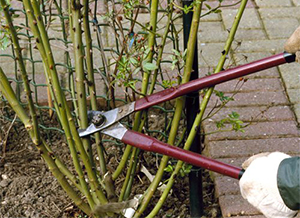 Sometimes less really is more. So I’ve recently tried to prune back the ads to just those that perform very well.
Sometimes less really is more. So I’ve recently tried to prune back the ads to just those that perform very well.
Speaking of pruning back ads, I used to have great success with Google’s AdSense. Unfortunately, earnings from AdSense have dropped precipitously. Besides that, you always have to be alert to competitors’ ads showing up on your site. I still use it on my other site related to sleep aids because I don’t have my own product and haven’t yet found affiliate products that perform as well as I would like in that niche.
I’ve also added a directory of Australian Shepherd breeders. I offer free listings as I want the directory to be as complete as possible, but I also offer premium listings for an annual fee which have several exclusive upgrades and services that are not available for free listings.
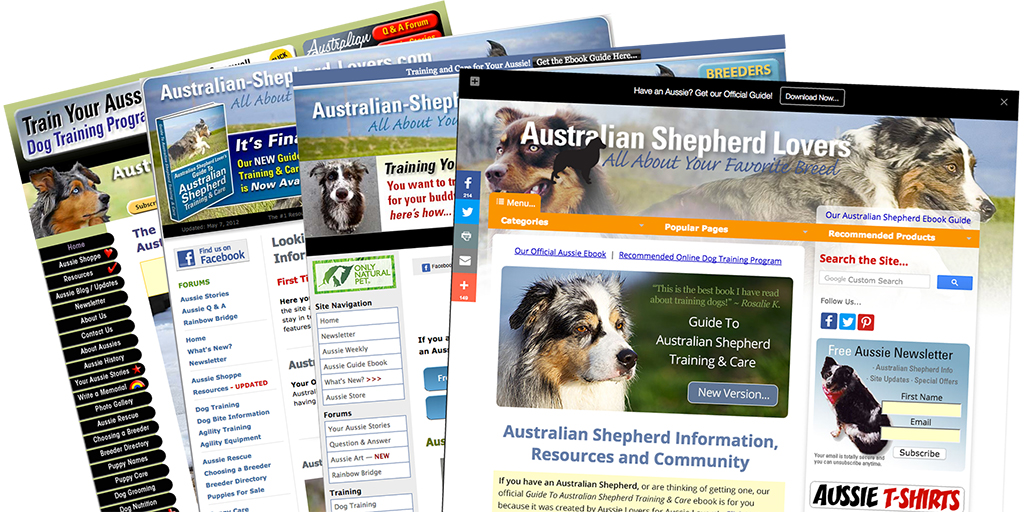
However, Anton’s key monetization advice is this: “When you create your own product, you own it.” Yes, it takes much more time and effort to create your own product than to recommend other people’s products. But, if you’re serious about growing your business, having your own products (or services) is a must-do.
As an SBI! member, you’ll have access to comprehensive articles and tutorials for creating and selling your own products, from simple ebooks to audio or video courses to physical goods.
6. How long did it take to start earning income from your online business? Is it a full-time or a part-time income?
It actually took quite a while, several years, but that was mostly because I got off to a slow start and strayed from the path (the SBI! Action Guide).
I’ve managed to cut my expenses and live more simply, which has enabled me to not have to work at another job. For me, this is a full-time income. I haven’t yet matched the income I was making at the newspaper, but I plan on achieving and then surpassing that amount.
In the meantime, I am earning enough that I can now stay home and dedicate my time to building my online business fully — which is helping to accelerate my success even further.
For Anton it took several years. Why? Because he started slowly, and because he “strayed from the path,” as he freely admits. In SBI! terms that means that he did not follow the Action Guide closely.
Can following a guide really have such an impact? It can, and it does. Time and again our most successful members quote the Action Guide as one of the top contributing factors to their success. See for yourself in our 2017 survey and again in 2018.
Think of the Action Guide as your personal mentor. It takes you by the hand and leads you from one business-building step to the next, in logical order, and with the right knowledge and tools to execute each step.
Could you find all that information yourself? Eventually. But at what cost? You can’t execute with passion, excellence and focus if you’re spending time searching for answers, if you’re unsure of what to do next. With the Action Guide, you’ll leave that uncertainty behind. You are free to focus on building your business.

7. In addition to www.australian-shepherd-lovers.com, you own 3 more SBI! sites. How do you manage all that work? And, in hindsight, was it a good idea to start more than one online business?
As I developed my first SBI! site, Australian-Shepherd-Lovers.com, I began to earn an income. While revenues steadily increased I never really knew, as things progressed, whether or not I had reached the limit of what I could realistically expect.
I thought, if I was earning this much from one site and I needed two or three times that amount to replace the income from a job then all I needed to do was create two or three more websites. Simple. Unfortunately, it doesn’t necessarily work that way.
If their marketing claims were true, most of their users should be successful, right? To the contrary. In recent studies, we saw that 84% of sites built with Wix are “invisible” on the web, i.e. they get zero traffic. With GoDaddy, the percentage is 74%.
How can you avoid falling into that trap? Change your mindset. You’re not building a website to make some money. You’re building a real, long-term, profitable business. Would you start two businesses in the offline world at the same time, say a bakery and an auto-repair shop? You wouldn’t. It’s the same online.
But let’s get back to Anton. Did he learn his lesson?
I don’t regret starting the second SBI! site though as it was the new-and-improved website about bullying to replace the original site I had built before discovering SBI!. The primary purpose of OvercomeBullying.org was to help raise awareness about bullying, especially workplace bullying, but I was able to generate enough revenue to financially justify at least some of the time I spent on it.
However, it is a difficult topic for me to have to immerse myself in day after day. I’ve recently decided that maintaining that site just takes too great a toll. But, as long as the information on the site helps others dealing with the kind of abuse I went through, I would like to leave the site up as a public service.
My third site, SleepAidGuide.com, was going gangbusters for a while. Then Google changed their algorithm and my traffic fell off a cliff; down to ten percent of what it was. I’ve managed to recoup much of that traffic since then, but it has taken a lot of time and work. Given how much I’ve put into the site I’d hate to do it but I may eventually sell it.
One has to also consider the opportunity costs. For every minute and dollar I spend on that site, it’s time and money I don’t have to invest in my Aussie site.
So, at this point, what did I do? Start another website, of course! But this time it would be different. It would be related to my Australian Shepherd site. That way I could cross-promote and use my Australian Shepherd site to help get it off the ground.
I did it by the book; got a coach to help me with the blueprint and made sure everything was perfect. It was going to be my “SBI! masterpiece” all about dog agility training.
It was beautiful. Too bad I’m almost the only person in the world who ever saw it. I just didn’t have the time to make it into a success. At least this time I had the sense to cut my losses. I won’t even give you the domain name because it’s not up anymore.
The good news is that I really did need a better dog agility training section on my Australian Shepherd site and I was able to salvage the content from the agility site and thereby improve the Aussie site. That’s what I should have done in the first place!
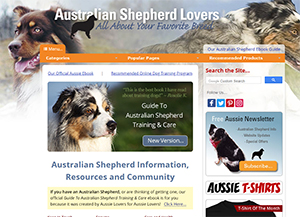 Have I learned my lesson yet? Nope. Well, I really am going to focus on Australian-Shepherd-Lovers.com, take it to the next level, and really polish it. But I am casting about for ideas for another site. If I did it in a measured way, taking into account the demands that would entail, I can see being able to handle it.
Have I learned my lesson yet? Nope. Well, I really am going to focus on Australian-Shepherd-Lovers.com, take it to the next level, and really polish it. But I am casting about for ideas for another site. If I did it in a measured way, taking into account the demands that would entail, I can see being able to handle it.
Perhaps, with any extra revenue I can generate, it’s time to make more use of freelancers and virtual assistants than before so I can free up the necessary resources to make them both successful.
Then I’ll have my fantastic Aussie site and my awesome yet-to-be-determined site. But once those two are up and running smoothly…
For example, when your first online business is well established, and you’re satisfied with the income level you’ve reached, then (and only then) is it a good time to consider starting a second one. And the more relevant it is to your first business, the more they can create a synergy that supports both.
At that point you should also have enough income to outsource tasks or hire help. You’ll be surprised how much more you can achieve when you delegate some of the tedious day-to-day work. Of course, you first have to find the right person. Here are 5 steps to hiring the perfect virtual assistant for your business.
8. What has been your biggest challenge so far as a solopreneur?
My biggest challenge would have to be time management and its attendant impact on productivity. While I have made improvements in this area it’s still very easy for distractions to creep in.
With YouTube, Netflix, and Amazon Prime bringing us a world of entertainment right to our computers, not to mention our social media channels and emails that are constantly demanding our attention, it’s often difficult to get in some real focused and productive work.
Fortunately, I’ve managed to put some rules in place to help keep things on track. For example, I like to do the biggest and most important tasks of the day first. That way I am fresh and able to do my best work before I start running out of steam.
Even if chaos strikes, I can still be happy that I’ve gotten something accomplished that helps move the needle for my business. Keep the 80/20 rule in mind and jump on those vital projects first!
I’m still not as good about following my own “rules” as I could be, but I know conquering this challenge will be key in growing my online business.
Eliminating distractions and focusing on the most important tasks each day is an excellent approach. And did you know that multi-tasking or task-switching makes you less productive? Experts estimate that the loss in productivity can be up to 40%. So, put those blinders on and focus on one task at a time!
9. What do you enjoy most about being an online business owner? How has it changed you, your life, your family?
I really enjoy not having to immediately jump out of my warm bed when the alarm clock goes off. I love my commute; to the kitchen for a coffee and then back upstairs to my computer. (Yes, I’m a “Coffee Achiever.”)
 I especially enjoy that even though I may only work a given number of hours a day, my websites work to generate an income for me 24/7/365. I love that I have created my own “safety net” (with special thanks to Ken Evoy and the team at SiteSell who made it possible and SBI! that provided the tools).
I especially enjoy that even though I may only work a given number of hours a day, my websites work to generate an income for me 24/7/365. I love that I have created my own “safety net” (with special thanks to Ken Evoy and the team at SiteSell who made it possible and SBI! that provided the tools).
My family and I may never fully recover from what was done to us by The Calgary Herald, but becoming an online business owner has given us a way forward and hope again for the future.
Are you a “coffee achiever,” too? Would you like to shorten your commute, while building a business for yourself and your family?
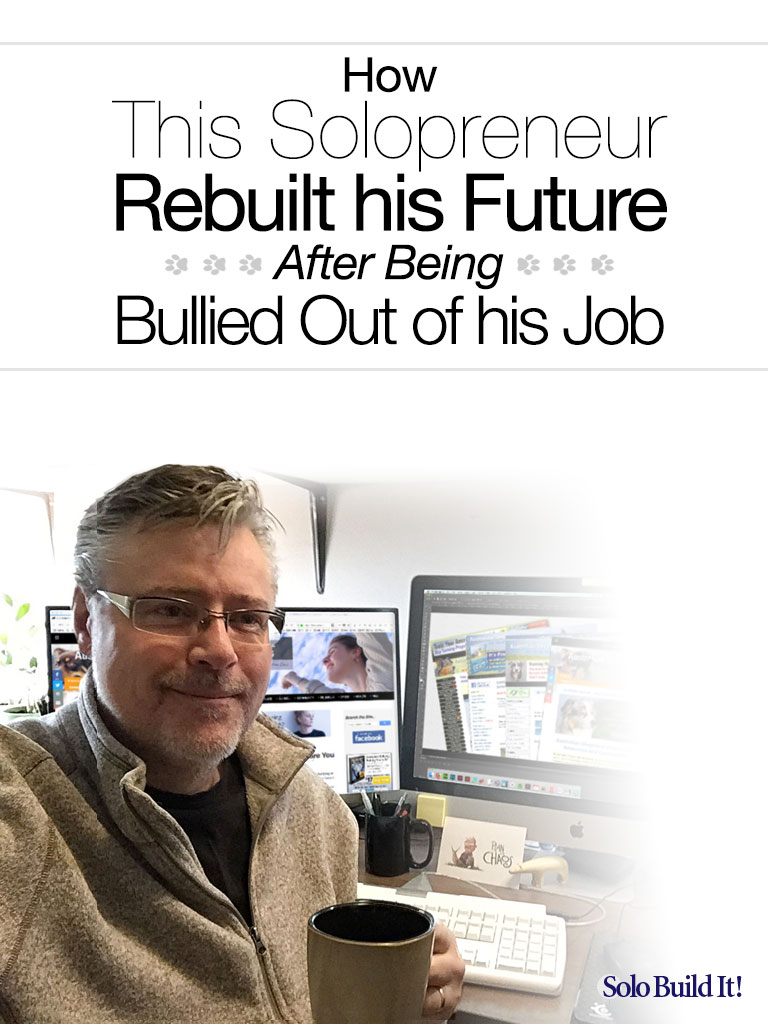
Latest posts by Margit Streifeneder (see all)
- From Traffic Peaks to Auto-Pilot: A Psychologist’s Website Success Story - March 27, 2025
- From Swim Teacher to Solopreneur: Building Passive Income Online - February 27, 2025
- From Concierge to Global Tours: 10 Lessons for Travel Business Growth - December 19, 2024

